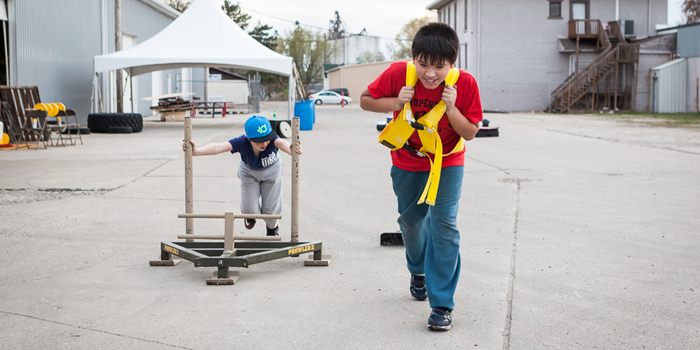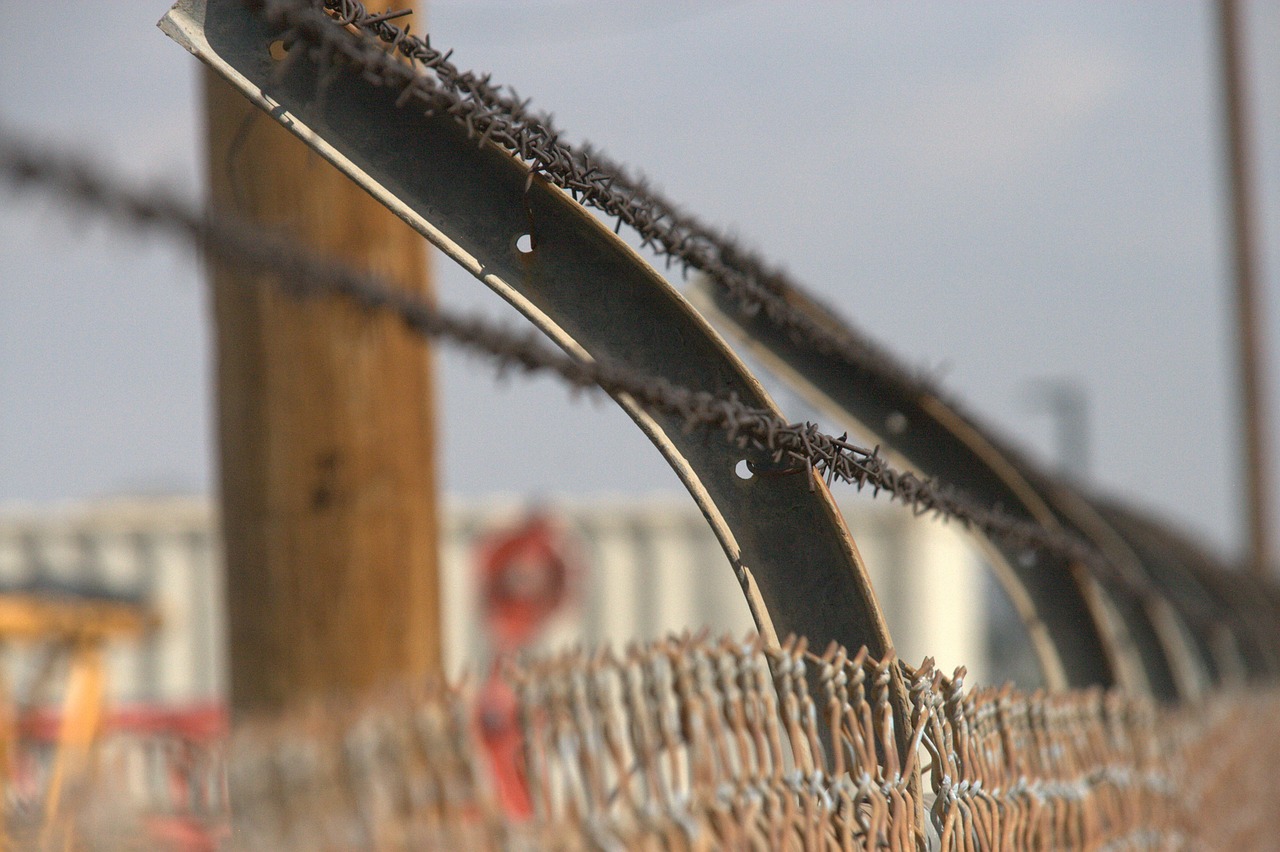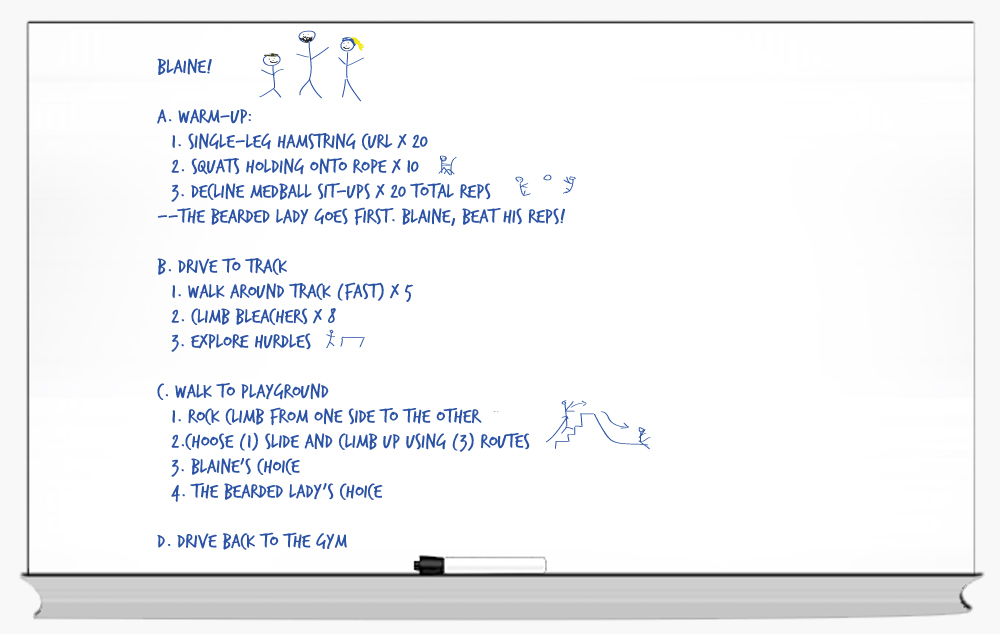
As mentioned in a previous article, training off-site for a child with autism can be a fun opportunity to gauge strength, weakness, and transfer of skills. As we know, it’s no endeavor we go into haphazardly or force upon the child. These seemingly unpredictable and at-first uncomfortable situations can turn into worthwhile places of learning and growth.
But remember, you can only plan and safeguard so far. You may be faced with challenges and events may take place that you never could’ve imagined—wonderful, disturbing, temperamental, and bizarre.
Take for example, the first time Blaine and I traveled to the high school’s track and field. I never imagined that before getting out of the car to walk the track and climb the bleachers, Blaine would be screaming on the top of his lungs with tears rolling down his cheeks. In between screams, he’d use his words to share how this was the place where he was relentlessly bullied — where teachers and classmates made him feel that “normal” was something to strive for.
Fast forward to a few months later. It was a surreal feeling to be rushing from the track to the gym with news and recorded proof of Blaine jumping hurdles — a feat he was very proud to have accomplished and share with his parents.
This is a story of willingness, heartbreak, enthusiasm, trust, fear, triumph, and, most importantly, flexibility. Through our story, my hope is that you see the beauty in changing up the schedule and continuously seek ways to keep your training goals flexible — even in times of insecurity and question.
You may be faced with challenges and events may take place that you never could’ve imagined—wonderful, disturbing, temperamental, and bizarre.
Let’s back up 10 minutes, to the small chuck of time before Blaine is screaming in my car’s passenger seat as we’re parked in the school parking lot. We’re looking at the dry-erase board in the gym, reading over our schedule step-by-step. Blaine is attentive, already mustering up a clever way to lessen the 35-pound weighted-vest load he’s to wear while walking the track.
We grab our coats, the weighted vest, and inform Dave we’re heading out to the track. In typical fashion with seat belts fastened and the car tires reaching Maple Street, he begins to play with the volume dial of the stereo and move his mouth in exaggeration, pretending to sing along to whatever rock song is blaring on the radio. One song later, we turn left into the high school parking lot. His upbeat vibe turns off, as does the radio. He’s stiff, silent, and appears to be defeated.
Three cues to park the car, Blaine recounts all the times he was made to feel like shit in the elementary school (attached to the high school). With great detail, he describes the school as a prison laced with barbwire. He describes the teachers and other kids as enemies that towered over him, tormenting him because he was unlike them. He was different, not normal, a slow learner, and was reminded of this daily.
For as long as his words were in overflow, I didn’t cut him off or have it he lower his voice. I listened to everything he had to say and remained speechless until the car became silent for a few seconds.
RELATED How To Get The Smell Of Dog Crap Off Yourself
In response to everything I heard, an exchange we’ve never had or ever came closing to having, I positioned myself to not pity him nor did I give him excuses on behalf of those who hurt him. I thanked him for sharing these memories and explained how I heard everything he had to say. I redirected his ideas on retaliation and instead, to use that energy to be thankful that he’s no longer in that environment —be appreciative that he’s at a school that has the resources to allow him to optimize his potential and accept him as he is. I had him pause and think what it means to be “normal” and after a few seconds asked, “Who the hell wants to be normal? Who ever accomplished anything great by striving to be normal?” He laughed and nodded his head in agreement, and then in a quick afterthought realized I said “hell” and swore he was going to tell on me. Together we laughed.
Slowly his stiffness, awkwardness, and defeat shifted to fluidity and willingness. It was as if a mountainous pile of papers bound by a hard cover was lifted off his chest. The more he talked and told his story the book widened too, each awful memory was snatched from the heavily glued spine and torn to shreds
We completed our track work scheduled for the day, drove back to the gym, and ended our session in normalcy: with a goodbye hug and a, “see you next Saturday.”
On the following workday, Dave and I sat down to talk about Blaine and the weekend. Assuming Dave had a similar conversation with Blaine about his feelings towards his elementary school experience previously, I was pretty surprised when I saw Dave’s eyes open wide with a blank stare as I began to describe Blaine’s dialogue at the track. Dave’s body appeared to be affected by my words. Especially when I shared Blaine’s words, repeating how he was made to feel like a slow learner, Dave placed his elbow on the desk and leaned his head onto his palm. He readjusted his hat excessively. Dave explained how he too was made to feel like the slow learner in school and never wanted his son to have to go through the same torment as he did. Blank-eyed with tears, Dave said the opposite of what I was expecting to hear next, the opposite of what his body language screamed. In a calm yet disheveled voice, he suggested we continue to go back and conquer those negative feelings and replace them with feelings of accomplishment and competence.
Dave explained how he too was made to feel like the slow learner in school and never wanted his son to have to go through the same torment as he did.
As much as I’d like to say that a glimpse of clarity crossed my mind post-meeting, that was not the case. My brain was bouncing back and forth between Blaine, Dave’s expressions and words, and my hopes to fulfill Dave’s request while placing Blaine in an advantageous position to meet those hopes. I remember sitting there with Dave, imagining Blaine experiencing victory at the track as Dave described, yet those images were clouded and in an incomplete state. I had no concrete idea or plan in how Blaine would eventually feel empowerment at the track. The only working variables I shuffled over and over again were, a) Blaine’s willingness to go back to the track, and b) Dave’s supportiveness of us going back.
A couple of weeks had passed and I placed track and field back on the schedule. I was curious to see the initial response from Blaine as he read the dry-erase board. Keep in mind, my role at this point was to present the idea to him and accept every outcome possible. In no way could the outcome affect the rest of our session. If he said no and it caused him great grief, I would need to be prepared with another plan without showing any signs of expectancy with a predetermined outcome.
Blaine read the dry-erase board. The outline was similar to our first visit with a slight progression of weighted bleacher climbs and a time limit on track laps. Without protest or hesitation, he grabbed his coat, said goodbye to Dave, and he b-lined to my car.
This visit was entirely different from the previous one. As we drove into the parking lot, Blaine was cool and remained upbeat. We parked, walked through the rotating gate, and immediately got to work. Aside from a few negative comments yelled randomly while running laps, our conversation was per usual: silly, laughable, light, and curious. Already he had surpassed last visit's accomplishments by walking at a faster pace to complete the same amount of laps in less time and he also climbed the bleachers six times instead of four wearing a weighted vest. A success!
It was obvious that we moved forward from the previous visit—mentally, emotionally, and physically. As the track visit was only one-third of the schedule, we completed what we needed to, drove back to the gym, and finished the rest of the schedule that was made up of lifting, a game, and choice.
Building momentum, we now had two positive experiences under our belts where we completed prescribed track work, improved upon the last session, and negativity towards the setting diminished. My role remained the same in each case: to listen, be enthusiastic, bring awareness to slight change and improvement, and stay fluid.
A few weeks had passed and a special friend of ours was coming to town. Unlike the bulk of the compound weekenders, this powerlifter has stopped in between his heaviest sets of squats on a weekend session to entertain Blaine, regardless of request.
We call him the Bearded Lady (pictures explain why), but most know him as Grant Pullin.
This particular weekend, Grant was coming to town to workout with Blaine. Knowing Blaine would be ecstatic to have the attention of the Bearded Lady for more than a few minutes in between sets, this seemed like the perfect opportunity to schedule in the track and field. Our schedule for the day:
Requesting a dry-erase marker, Blaine made a few changes to the schedule before beginning the warm-up; five laps around the track was replaced with seven laps around the track, walking was erased and replaced with running, and eight track climbs increased to 10. No doubt, Blaine was feeling good and wanted to go above and beyond the expectations.
Once at the track, it was like a perfect storm— the good kind where there’s no threat of harm and the steady sound of rain and thunder brings comfort and excitement.
We completed our track runs and bleacher climbs with only one more assignment to complete: explore hurdles. "Explore" left this assignment open-ended, because I had no real grasp of Blaine’s interest in hurdles. If anything, it could serve as a conversational piece between the three of us and serve as a positive association and progression for a next visit. Then the unexpected unfolded.
Serendipitously, school friends of Blaine’s brother were hurdling. Watching the children race to the hurdles and jump, Blaine expressed quietly in my ear, “I bet John can teach me how he did that.” I encouraged Blaine to ask. With no more prompting needed, he asked politely, “Hey John, you think you can teach me how to do that?”
John ran over to help immediately and spanning across the next two hours, Grant and I watched as Blaine became the student and John the coach. John started off the lesson by giving Blaine some background information: When he learned to hurdle and by whom, and then transitioned into the starting position, how to get from the starting position to the hurdle, how to jump over the hurdle, and how to land. He modeled the entire sequence and then broke down the sequence into mini parts, giving great emphasis to the smallest detail. This is where he placed Blaine into each position and used his words and hands to reinforce and model what Blaine should be thinking, moving, and doing. He was patient, enthusiastic, motivating, and direct.
Blaine was 100% receptive to John’s coaching style.
Blaine got into starting position, ran to the hurdle, lifted his leg, hit the hurdle and fell to the ground. John was right by his side through the running, jumping and falling. Blaine paused on the track for about three seconds and with the help of John’s voice, got back on his feet, ready to try again. In the short distance between the hurdle and starting position, John coached Blaine up, told him everything he did right and offered him a few pointers for the next try. Blaine got into starting position, ran to the hurdle, and when John prompted him, lifted his leg, brushed the hurdle, but landed.
Again, John was right by his side the entire time. John congratulated his land. They walked back to the starting position as John coached up Blaine, again telling him everything he did right and what he could do better to clear the hurdle for the next try. On Blaine’s third attempt, Blaine cleared the hurdle, landed the jump, and continued to run once he landed. John was right by his side. He high-fived Blaine and told him how proud he was of him. Blaine was smiling ear to ear. His immediate response was questioning if I got the recorded proof. I said yes and he was very excited that he could show his mom and dad what he accomplished. He then brainstormed aloud, “in the next few months I can build up my hurdling stamina from one hurdle to two in a row and then three to four.
This is a story of willingness, heartbreak, enthusiasm, trust, fear, triumph, and, most importantly, flexibility. The end goal was held loosely, therefore growth and change was celebrated in every way possible — every visit, every small sign of progress and change. In our many celebrations along the way, trust and enthusiasm fueled the willingness to go back again and again and feed off the prior lesson by pushing a little further. This foundation that was slowly built gave us the approval to be present, learn more, and have fun every time.
I think back to that meeting between Dave and I, and realize how that could’ve been the stopping point in this adventure. As much as he wanted to say no to us going back, fearful of causing more meltdowns and pain (as he confessed later on), he instead said yes. And although we didn’t have the answer that afternoon of how we’d accomplish such a feat, he trusted me to figure it out.
Rather than reading a 10-list article encouraging you to include flexibility within your programming approach, I hope our story illustrates how flexibility centers a strong and meaningful foundation — it starts with the parents, is passed down to the trainer, and received by the child. Hold on loosely to your goals and the end result can be remarkable.













